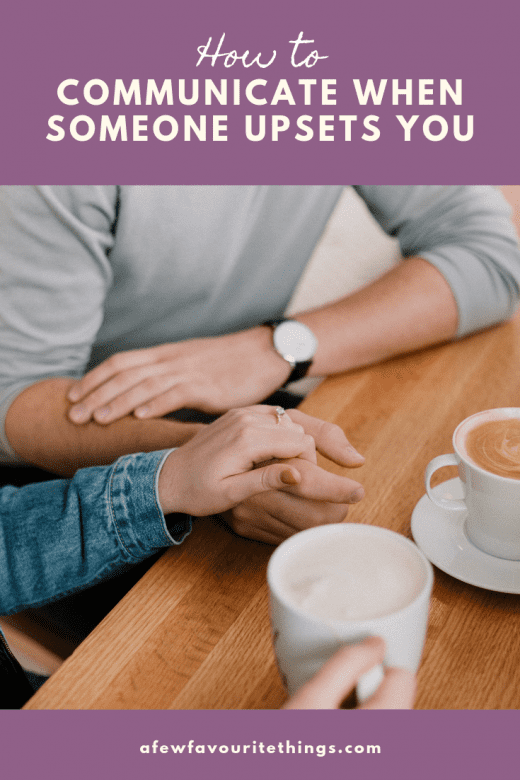In our daily interactions, we often pick up on emotional cues that can reveal how someone truly feels, even if they aren't saying anything directly. Recognizing these cues is key to understanding if someone might be upset with you. Emotions are complex, and people express them in various ways. By being more attentive to non-verbal signals and changes in behavior, you can navigate your relationships with greater empathy and awareness.
First, let’s talk about body language. It’s often said that actions speak louder than words. Pay attention to a person's posture, facial expressions, and eye contact. For instance:
- Crossed arms may indicate defensiveness or discomfort.
- A lack of eye contact can suggest that someone is distressed or avoiding engagement.
- Frowning or tense facial expressions often point to unhappiness or frustration.
Next, consider the tone of voice. The way someone speaks can be as telling as their words. Are they speaking in a monotone, or is there a sense of excitement or warmth missing from their voice? Are short, clipped responses becoming more frequent? These shifts can be indicators of underlying emotions.
Lastly, emotional cues can be observed in the context of your interactions. If you’ve recently had a disagreement or the conversation has shifted to a sensitive topic, extra attention is warranted. Understanding the context can help you interpret their cues more accurately.
Common Signs That Someone Might Be Angry

Now that we’ve covered emotional cues, let’s dive into some common signs that might indicate someone is angry with you. Recognizing these signs can help you address the situation before it escalates into conflict.
Here are some key signs to look for:
- Short or clipped responses: If someone starts giving you one-word answers or seems less engaged in conversation, this might signify annoyance or disappointment.
- Increased sarcasm: Sometimes, when people are upset, they resort to sarcasm as a defense mechanism. If their comments start veering into sarcastic territory, take notice.
- Presence of tension: You can often feel the mood shift in a room. If there’s a sudden sense of tension or discomfort, it’s a red flag that someone might be harboring anger.
- Withholding affection or positive interaction: If you’re used to receiving warmth and affection, a sudden lack of it can indicate that something is wrong. This withdrawal is often a sign that someone is upset.
- Uncharacteristic behavior: Changes in habits, such as being more irritable than usual or avoiding interaction, can also be telltale signs. If someone who is normally cheerful is acting out of character, it’s worth investigating.
Another useful tool for assessing if someone is upset is to observe their physical reactions during conversations. Are they clenching their fists, tapping their feet, or displaying any other signs of frustration? These physical manifestations of anger can sometimes be as clear as words.
It’s important to approach these signs with an open mind. They are not definitive proof that someone is angry; rather, they are signals for you to explore the situation further. If you notice these signs, consider gently asking the person if something is bothering them. A simple, "Is everything okay?" can often open the door for honest communication.
In conclusion, being aware of emotional cues and recognizing common signs of anger can significantly enhance your interpersonal skills. By paying attention to these signals, you can navigate complex relationships with more understanding and less conflict.
Also Read This: Why OK.ru’s Interface Is Simple and User-Friendly for All Age Groups
3. Effective Communication Techniques to Gauge Feelings

When it comes to understanding if someone is upset with you, communication plays a crucial role. However, you don't want to come off as invasive or confrontational. Here are some effective techniques to help you gauge feelings without escalating any tension:
- Active Listening: This is more than just hearing the words; it's about paying attention to the speaker's tone and body language. Nod, maintain eye contact, and sometimes paraphrase what they say to show you’re engaged. For example, you might say, “It sounds like you’re feeling frustrated about the situation.” This encourages them to share more.
- Open-Ended Questions: Instead of asking questions that can be answered with a simple ‘yes’ or ‘no,’ try framing your questions to encourage dialogue. For instance, you might ask, “How do you feel about what happened yesterday?” This invites them to express their thoughts and feelings more freely.
- Non-Verbal Cues: Be observant! Sometimes, people's body language can tell you a lot more than their words. Look for signs like crossed arms, lack of eye contact, or a tense posture. These can be indicators that something is off, even if they haven’t said anything directly.
- Empathetic Statements: Show that you understand and care about their feelings. Simple phrases like, “I can see this is bothering you,” or “I understand why you might feel that way,” can create an atmosphere where they feel safe discussing their feelings without judgment.
- Be Patient: Sometimes, people need a little time to process their feelings before they’re ready to talk. Allow space for them to open up at their own pace, rather than pressuring them for answers.
Using these techniques can help you navigate the tricky waters of communication. Remember, the goal is to foster an environment where the other person feels comfortable sharing their feelings. With practice, you'll develop a better intuition for reading emotions and engaging in deeper conversations.
Also Read This: How to Customize Your OK.ru Profile to Showcase Your Unique Personality
4. Ways to Approach the Conversation Carefully
So, you've noticed some signs that someone might be upset with you, and you want to address it, but how do you approach the conversation without creating conflict? Here are some thoughtful strategies to ensure you tread lightly and maintain a positive dialogue:
- Choose the Right Time and Place: Timing can make or break your conversation. Aim for a setting that’s relaxed and private where you both can speak freely without distractions. A calm coffee shop or a quiet walk can work wonders.
- Use “I” Statements: Start your conversation by focusing on your own feelings rather than accusing them. For example, saying “I feel like there’s been some tension between us lately” is much less confrontational than “You seem really upset with me.” This difference can set a positive tone right from the get-go.
- Acknowledge Their Feelings: If you sense something's off, validate their feelings. Say things like, “I noticed you’ve seemed a bit distant lately, and I want to make sure everything is okay.” This shows that you’re paying attention and care about their emotional state.
- Be Prepared for Different Outcomes: Understand that the conversation may not go the way you expect. They may feel ready to talk, or they might not be in the mood. Approach the conversation with openness and be willing to listen more than you speak.
- Follow Up After the Conversation: If the conversation goes well, make sure to check in later. Ask how they are feeling about the situation now. This shows you’re invested in maintaining a healthy relationship and can strengthen your bond.
Approaching a sensitive subject with care requires a balance of empathy and assertiveness. By preparing yourself and choosing your words wisely, you can create a safe space for both of you to share honestly, which is a significant step toward resolving any underlying issues.
Also Read This: A Step-by-Step Guide to Sharing Stories and Moments Effectively on OK.ru
5. Strategies for Conflict Resolution if Anger is Confirmed
Okay, so you've done some digging and discovered that, yes, someone is indeed upset with you. Yikes! The good news is that recognizing the issue is the first step toward resolution. Now, let's look at some effective strategies to navigate this sensitive situation without turning it into a bigger conflict.
- Open the Lines of Communication: Approach the person when both of you are calm. You might say something like, "Hey, I noticed there seems to be some tension between us lately. Can we talk about it?" This sets a non-confrontational tone and shows you're open to hearing their feelings.
- Practice Active Listening: Once you’re in a conversation, be sure to listen more than you talk. Paraphrase what they say to show you understand and value their feelings. For instance, “So if I’m hearing you right, you felt overlooked during that meeting?” This not only validates their feelings but can also reveal the root cause of their upset.
- Acknowledge Their Feelings: Even if you don’t completely agree with their perspective, it’s crucial to acknowledge how they feel. Phrases like, “I can see that this is really bothering you,” can go a long way in diffusing tension.
- Apologize When Necessary: If you find that your actions truly hurt the other person, a sincere apology is essential. Acknowledge what you did and express genuine remorse: “I’m really sorry for how my words affected you. That wasn't my intention.”
- Collaborate on a Solution: After addressing the issue, it’s beneficial to discuss how to move forward together. Ask them, “What do you think we can do to avoid this in the future?” This invites them to take part in finding a resolution and reinforces teamwork.
Conflict resolution isn’t about who’s right or wrong; it’s about finding a way to understand each other better and move forward. Remember, every relationship goes through difficult times, but handling them gracefully can actually strengthen the bond between you and the other person.
Also Read This: How to Navigate the OK.ru Platform Like a Seasoned Pro
6. Maintaining a Positive Relationship Moving Forward
Once the air is cleared and you’ve resolved the conflict, the journey doesn’t stop there. The real challenge lies in ensuring that the relationship continues to flourish after such an uncomfortable experience. Here are some strategies to maintain that positive vibe:
- Check-In Regularly: Make it a habit to ask how the other person is feeling about your relationship. A simple “How have you been feeling lately?” can remind them that you care about their well-being and are invested in the relationship.
- Establish Boundaries: Discuss what behaviors or situations might trigger conflict in the future and agree on boundaries that respect each other’s needs. This proactive approach shows maturity and commitment to preventing misunderstandings.
- Celebrate the Good: Ratio your conflict conversations with positive ones! Take time to celebrate successes, share good news, or even just enjoy a coffee together. Building positive moments helps reinforce your bond.
- Encourage Open Feedback: Ensure the other person feels comfortable giving you feedback—not just when things are wrong, but also when things go well. This fosters a sense of security and trust in the relationship.
- Practice Kindness: Small acts of kindness can make a huge difference. A compliment, a thank-you note, or even a simple gesture can show that you value and appreciate the other person, helping to strengthen your connection.
Life is too short to hold grudges or let misunderstandings linger. By implementing these strategies, you can not only mend bridges but also build a lasting, positive relationship that can endure life's ups and downs.
Conclusion: Navigating Emotional Situations with Sensitivity
Understanding the emotional landscape of those around us is essential for maintaining healthy relationships. When you suspect that someone may be upset with you, approaching the situation with empathy and sensitivity is crucial. Here are some key points to consider:
- Listen Actively: Pay attention to their words and body language. Non-verbal cues often reveal more than verbal expressions.
- Check-in Gently: Consider asking them about how they feel in a non-confrontational way. For example:
- "I noticed you seem a bit distant; is everything okay?"
- "I value our relationship and want to make sure you feel comfortable talking to me."
- Acknowledge Their Feelings: If they do express that they are upset, validate their feelings rather than dismissing them.
- Use phrases like, "I can see why that would upset you."
- Empathize by sharing, "I would feel the same way."
- Give Space if Needed: Sometimes, people need time to process their emotions. Offer them space but let them know you’re available to talk.
By approaching emotional situations with care and consideration, you can foster open communication and resolve misunderstandings before they escalate. Remember, mutual respect and understanding are the foundations of any strong relationship.
 admin
admin








